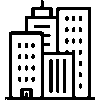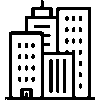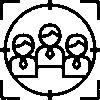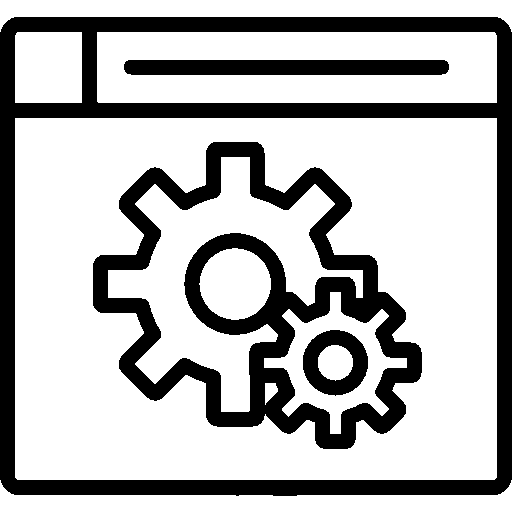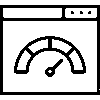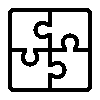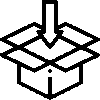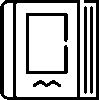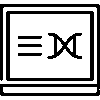Projects - Editing a Project Record
-
Summary Card
This is the screen where the project summary is displayed.

The project summary card includes Project Information, Project Members, and Product information.
-
Edit
This is the screen where the project record is edited.

On the project record screen, Relevant Customer, Related Product, Project Name, Project Scope, Project Code, Project Type, Planned Start Date, Planned End Date, Percentage of Completion, Description information are edited. After all operations are completed, they are saved by pressing the Save button.
-
Members
This is the screen where the members attending the meeting are displayed.

Members and representatives are displayed on the Members screen. Staff and customers are added by pressing the Add Personnel and Add Customer buttons. When adding Personnel or Customers, the Company and its Participants are selected.
-
Pencils
This is the screen where project items are displayed.

The product list is displayed on the Items screen. The product list table contains Product Information, Unit Price, Discount, VAT, Quantity, Total Amount information. By pressing the Add New button, the product is added and the products are listed.
-
categories
This is the screen where the categories are displayed.

Categories are selected and saved according to preference.
-
Parameters

Parameters are added as 1-2-3 depending on the project.
-
Actions
This is the screen where actions are displayed.

On the Actions screen, Sequence, Code, Action Definition, and Action Type information are displayed in a table.
-
Content Management
Content Management; It is divided into two: Product Contents and Documentation Contents.
Product Contents
 Depending on the project, products and product content are added.
Depending on the project, products and product content are added.Documentation Contents

Documentation content is managed by adding a Category to the documentation content. Content is added by pressing the Add New Content button.
-
Capacity Planning
Capacity Planning; It is divided into two: Attendance Control and Personnel Permissions.
Attendance Check

The staff's attendance checklist is included as a monthly schedule.
Personnel Leaves

On the personnel permissions screen, Personnel, Form Number / Leave Type, Start and End information are displayed in a table.
-
Budget and Cost
Budget and Costs; It is divided into eight parts: Budget Summary, Budget Settings, Personnel Activity Costs, Commissions, Expenses, Travels, Invoices, Payment Plan.
Budget Summary

The Budget Summary page includes Project cost and subject information.
Budget Settings

Estimated Exit Period, Use in Budget Summary and Exchange Rate information are set on the Budget Settings screen.
Personnel Activity Costs

Activities and Budget / Cost Analysis information is calculated by entering time information on the Personnel Activity Costs screen.
Commissions

On the Commissions screen, the customer is selected and Commission Base and Commission Type information is entered.
Expenses

On the All expenses screen, Personnel Name, Form Code, Description, Date, Amount, Amount, VAT, Total information are listed in a table.
Travels

On the Travels screen, Responsible, Travel Code, Subject / Description, Travel Information, Start Date, End Date, Planned Budget, Actual Budget information are presented in a table. A trip is added from the travel application by pressing the Add New Trip button.
Bills

On the Invoices screen, Direction, Customer, Invoice Number, Description, Price / VAT, Total Amount, Date, Payment Status information are displayed in a tabular form.
Payment Plan

The payment plan is selected and saved.
-
Progress report
Progress report; It is divided into two: Detailed Status Report and Phased Status Report.
Detailed Status Report

On the Detailed Status Report screen, No., Actual Activities, Deviations, Planned Activities, Expected Decisions, Result, Transaction Information and Status information are presented in tabular form. A detailed status report is added by pressing the Add New button.
Progressive Status Report

On the Progressive Status Report screen, No., Calendar, Scope, Quality, Cost, Month, Transaction Information and Status information are displayed in tabular form. A progressive status report is added by pressing the Add New button.
-
Communication Plan
This is the screen where the communication plan is displayed.

On the Communication Plan screen, Title, Type, Period, Method, Contact Persons and Transaction Information are presented in a tabular form. The Communication Plan is added by pressing the Add New button.
-
Closing Checklist

The closed checklist includes detailed information on Project Performance, Closing Activities and Results. Editing is done by pressing the edit bar.
-
Lessons Learned

The Lessons Learned screen includes Incident and Suggestion information. By pressing the add new button, a newly learned lesson record is created.
-
Feedback

On the Feedback screen, Number, Contact Person, Feedback, Request and Transaction Information are displayed in a tabular form. Feedback is added by pressing the add new button.
-
Risk and Problem Management

On the Risk and Problem Management screen, Title, Priority Type, Status, Category, Action and Creator information are listed in a table. A new Risk and problem management record is created by pressing the Add New button.
-
Requirement list

On the Requirements Information screen, Title, Status, Priority, Quantity, Creator information are listed in a table. A new requirement list is added by pressing the Add New button.
-
Validation

The Validation screen includes Validation Party and Standard Operating Procedure information.
-
Stages

The Stages screen includes Stage, Date, Stage Change Date information.
-
Customer's other Projects
This is the screen where the customer's other projects are displayed.

On the Customer's Other Projects screen, Project Code, Customer Information, Project Information, Connected Product, Members, Transaction, Number of Tasks, Duration, Recording Date, Actual Start Date, Actual End Date information are listed in a table.
-
Questionnaire
This is the screen where all surveys are displayed.

On the All Surveys page, No., Survey Name, Contact Persons, Number of Participants, Survey Type, Registration Date information are listed in a table.
-
Activity
This is the screen where events are displayed.

On the event screen, the Responsible, Event Code, Event Name, Member/Participant, Start Date, and End Date information are listed in a table.
-
Lists
This is the screen where the lists are displayed.

On the Lists screen, No, List Name, Description information are listed in a table. By pressing the Add New button, the list is selected and a new list record is created by adding a description.
-
Tasks
Goreler; The list is divided into four: Calendar, Kanban and Priority Order.
List

On the Tasks screen, Index, No, Task Description, Contact Persons, Stage, Progress, Duration, Connection, Recording Date, Transaction Date information are listed in a table. It is saved by pressing the Add New Task button. The top menu contains Calendar, Timeline and Agenda information.
Calendar
 Task tracking can be easily done by processing daily, weekly and monthly tasks on the calendar screen.
Task tracking can be easily done by processing daily, weekly and monthly tasks on the calendar screen.timeline
 The Timeline page includes a daily timeline.
The Timeline page includes a daily timeline.agenda
 The Agenda page is used by entering Date, Time and Event information.
The Agenda page is used by entering Date, Time and Event information.Kanban

Kanban is a visual management method used to manage business processes and workflow. The Kanban page includes the stages of the task: Postponed, Pending, In Process, Testing, Completed, Canceled.
Quests (Open)

On the Tasks screen, Index, No, Task Description, Contact Persons, Stage, Progress, Duration, Connection, Registration Date, Transaction Date information are listed in a table.
-
Log Records

On the log records screen, User Name, Description, Transaction Status and Date information are listed in a table.

